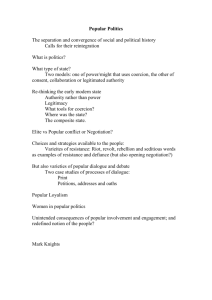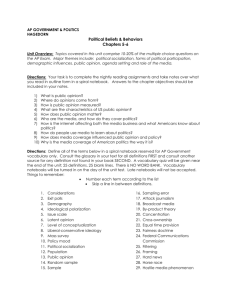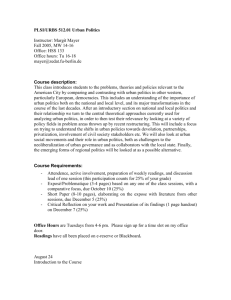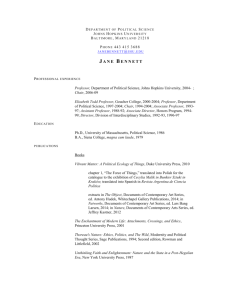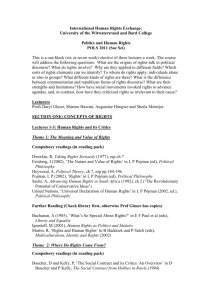Popular Political Cultures
advertisement
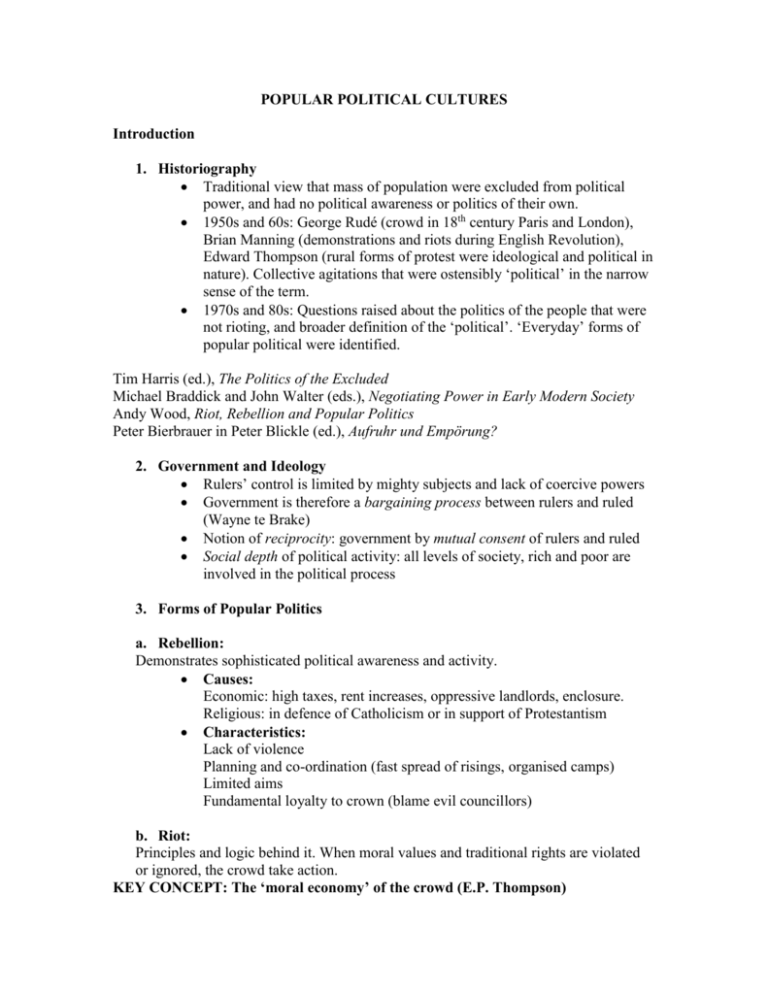
POPULAR POLITICAL CULTURES Introduction 1. Historiography Traditional view that mass of population were excluded from political power, and had no political awareness or politics of their own. 1950s and 60s: George Rudé (crowd in 18th century Paris and London), Brian Manning (demonstrations and riots during English Revolution), Edward Thompson (rural forms of protest were ideological and political in nature). Collective agitations that were ostensibly ‘political’ in the narrow sense of the term. 1970s and 80s: Questions raised about the politics of the people that were not rioting, and broader definition of the ‘political’. ‘Everyday’ forms of popular political were identified. Tim Harris (ed.), The Politics of the Excluded Michael Braddick and John Walter (eds.), Negotiating Power in Early Modern Society Andy Wood, Riot, Rebellion and Popular Politics Peter Bierbrauer in Peter Blickle (ed.), Aufruhr und Empörung? 2. Government and Ideology Rulers’ control is limited by mighty subjects and lack of coercive powers Government is therefore a bargaining process between rulers and ruled (Wayne te Brake) Notion of reciprocity: government by mutual consent of rulers and ruled Social depth of political activity: all levels of society, rich and poor are involved in the political process 3. Forms of Popular Politics a. Rebellion: Demonstrates sophisticated political awareness and activity. Causes: Economic: high taxes, rent increases, oppressive landlords, enclosure. Religious: in defence of Catholicism or in support of Protestantism Characteristics: Lack of violence Planning and co-ordination (fast spread of risings, organised camps) Limited aims Fundamental loyalty to crown (blame evil councillors) b. Riot: Principles and logic behind it. When moral values and traditional rights are violated or ignored, the crowd take action. KEY CONCEPT: The ‘moral economy’ of the crowd (E.P. Thompson) Characteristics: Preceded by petitioning or litigation (last resort) Limited aims Discipline of crowd (price setting) Legalistic and deferential language Meant to inspire the magistrates to action, appealed to paternal, patriarchal and hierarchical ideology that lay behind governance. c. Resistance: People were not always passive and deferential, they engaged in (not directly confrontational) activity that was subversive and threatening. KEY CONCEPT: ‘The weapons of the weak’ (James C. Scott) Claiming loyalty to the crown and acknowledging their power was a sensible tactic or strategy But this in fact concealed more subversive politics These actions are subversive because they do pose a direct threat to the social order and are critical of the inequality of the way that society is structured and functions Examples: libel, threats of arson, anonymous letters, underground verse, rumours, seditious speech. Ethiopian proverb: when the great lord passes the wise peasant bows deeply and silently farts. ‘Weapons of the weak’ sample bibliography Bellany, Alastair, ‘“Rayling Rymes and Vaunting Verse”: Libellous Politics in Early Stuart England, 1603-1628’, in Kevin Sharpe & Peter Lake (eds.), Culture and Politics in Early Stuart England (London & New York, 1994), pp. 285-310. Capp, Bernard, ‘Arson, Threats of Arson and Incivility in Early Modern England’, in Peter Burke, Brian Harrison and Paul Slack (eds.), Civil Histories: Essays in Honour of Sir Keith Thomas (Oxford, 2000), pp. 197-213. Cox, Nick, ‘Rumours and Risings: Plebeian Insurrection and the circulation of Subversive Discourse Around 1597’, in Dermot Cavanagh & Tim Kirk (eds.), Subversion and Scurrility: Popular Discourse in Europe From 1500 to the Present (Aldershot, 2000), pp. 43-57. Fox, Adam, ‘Ballads, Libels and Popular Ridicule in Jacobean England’, Past & Present 145 (November 1994), pp. 47-83 Hindle, Steve, ‘Custom, Festival and Protest in Early Modern England: The Little Budworth Wakes, St Peter’s Day, 1596’, Rural History 6:2 (1995), pp. 155-78. Rollison, David, ‘Conceit and Capacities of the Vulgar Sort: The Social History of English as a Language of Politics’, Cultural and Social History 2:2 (2005), pp. 141-64





